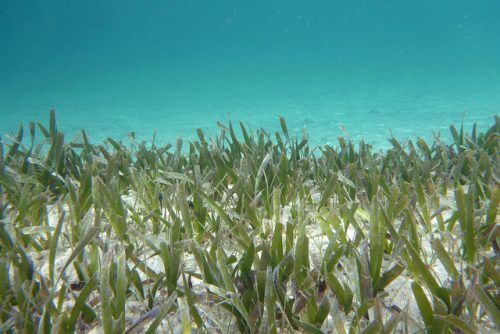While the bees on land are disappearing, researchers have found "bees" that pollinate plants under the sea

By Maya Falah, Angle - news agency for science and the environment
In recent years we have heard quite a bit about the fact that the bees are in a serious crisis, and they are disappearing en masse. For many years, researchers have not been able to understand what causes the disappearance of the hardworking insects - whose importance to the ecosystem and agriculture is of inestimable value - but over the past year or two, there is growing appreciation that alongside the effect of spraying and the disappearance of open spaces, also in this story Climate change is taking part - which reduces their living areas and pushes them north.
But at the time the future of the bees is not really clear - mainly because the predictions for climate change until the end of this century Not exactly good omens for them - Researchers discovered creatures whose behavior parallels that of bees, and they act as pollinators that spread pollen from the flower to new areas where the plant can take root. The really surprising part of the story, is that these artifacts were discovered on the bottom of the sea.
The disappearing sea weed
The "bees" of the sea In fact, they are not only wingless and stingless, but they are actually tiny marine worms that live on the seabed in areas where tropical sea grass of the "turtle grass" type grows and animals eat the grass and its flowers. When the worms feed their hearts with the nutritious powder provided by the flowers, it sticks to their bodies, and the worms become complicit in the crime and unwittingly help it to spread on the seabed in their search for food.
The published research is a novelty, because researchers were previously unaware of the phenomenon of marine pollination by animals, and until recently thought that sea currents were responsible for transferring the pollen from place to place within the sea. In a laboratory experiment that included aquariums containing sea grass and various creatures, the researchers noticed that a variety of tiny creatures are the ones who actually carry out the dispersal of the pollen.
Unfortunately, even the help that seagrass receives from the hardworking pollinators may not be enough to save it: in recent years There has also been a devaluation in the amount of seaweed It grows on the bottom of the oceans, and as of 2009, about 1100 square kilometers of seagrass meadows are lost every year at a rate that is constantly increasing. The increase in the rate of grass loss is probably mainly related to an increasing amount of fertilizers that find their way into the sea and cause the sea to be enriched with nitrates and nutrients that cause algae blooms. These reduce the exposure of the grass to light.
Beyond its high importance to the entire marine ecosystem - in which many creatures rely on it as food and as a place to hide - sea grass provides important system services to humans as well: similar to forests, it helps us fix carbon dioxide (CO2) and reduce the amount of gas emitted into the atmosphere and responsible for global warming. The sea grass fixes an amount of CO2 equal to the amount fixed by all the equatorial forests of the earth.
Not a substitute for bees
And back to the bees: probably until we manage to arrange equipment for the sea bees to breathe above the water and teach them to fly - they will not be potential replacements for the bees. So probably the problem that the disappearance of the bees will create, if it does happen, they won't really help us solve. But in the meantime, it is interesting to discover that nature knows how to use similar mechanisms in such different places and that even in the sea there is a similar mechanism of pollination through living production.

One response
In my opinion, the bees are disappearing like other insects because of the new systemic pesticides that are not toxic to humans but are toxic to insects. They are absorbed in all the tissues of the plant and remain in the plants for long periods and kill any insect that comes in contact with the plant - for example Confidor, etc.
In recent years, all the gardeners and all the farmers use these materials in huge quantities and without regard for the quality of the environment.
.